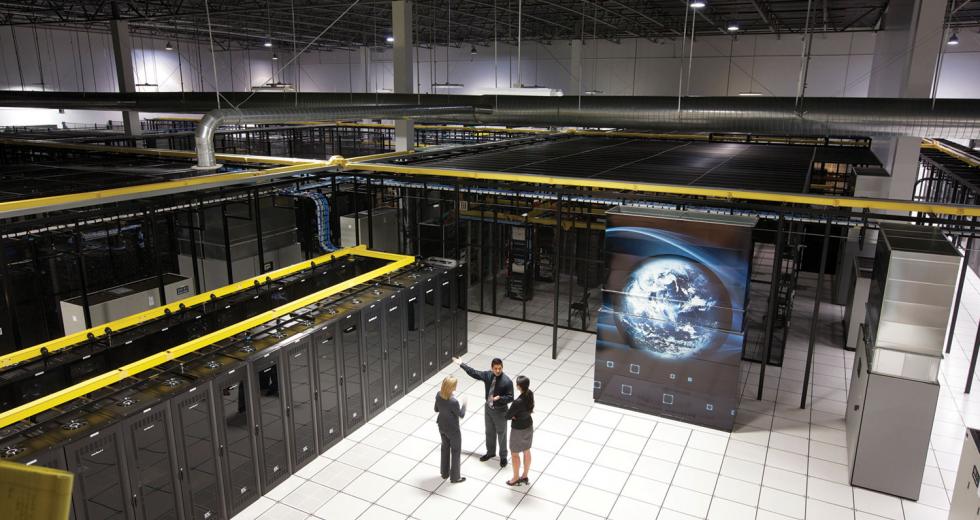While most businesses are postponing investments and stashing cash, at least one expense is expected to grow this year: information technology.
Worldwide, IT spending is estimated to increase 5.1 percent to $3.6 trillion in 2011, according to Gartner Inc., a technology research and advisory firm. What’s more, Gartner released a January survey indicating that CIOs worldwide are making cloud computing their top priority this year, followed by virtualization and mobile technologies.
The technology term cloud has been called a trend, a marketing term and a new business model, depending on the expert you ask. At a basic level, it’s moving your computer processing and storage from on-site servers to the Web, so all that’s needed to access data is a computer and Internet access.
“The term cloud technology is really a misnomer,” says Greg McAvoy-Jensen, executive director of Granite Horizon, an Elk Grove firm offering enterprise-grade Web development and content management solutions on a cloud basis. “It is really a transition of the business model. Instead of buying software and hardware upfront, businesses can pay for only the service they need when they need it. One simple definition of moving to the cloud means using an Internet-based service for something that you used to buy software for.”
There are basically two types of cloud service: public and private. The public cloud is what is referred to as the Amazon.com model, Amazon Web Service, wherein anyone can rent data space and access it on the Web. Amazon is the front-runner with public cloud service, and other leaders include Google and Microsoft.
The public cloud is geared for smaller-scale users, as it is more entry level and is inexpensive. In other words, anyone with a charge card and Internet access can use it. However, public clouds are located in a shared environment with masses of users, which presents higher security risk than private clouds.
Private clouds are specific providers, which offer higher-grade services dedicated specifically to business.
InfoQ.com, a website that tracks the enterprise software development community, says vendors and analysts are expecting cloud computing initiatives to receive real commitment this year in the form of budget line-items from all sizes of companies.
StrataScale Inc., a division of RagingWire Enterprise Solutions Inc., is a data center in Sacramento offering private cloud services for small to medium business, both locally and in the Bay Area. The company’s 220,000-square-foot data center is engineered to provide 99.999 percent availability of power, cooling and network connectivity with 24/7 on-site management support.
“The advantage to companies using our services is that they don’t have to buy their own IT infrastructure and can invest more in operational, rather than capital, expenditures,” says Ron Suchan, director of sales.
“The appeals for businesses are scalability, efficiency, saving on power and resources and the maximization of IT dollars,” says Denoid Tucker, vice president of technology. “Any size business can benefit from cloud (computing) because it involves paying only for the infrastructure it needs.”
According to Gartner, the typical IT organization invests two-thirds of its budget to daily operations. Moving to the cloud would free up 35 to 55 percent of operational and infrastructure resources for allocation elsewhere.
“I didn’t believe the hype about the cloud until I experienced it,” says Steve Alves, president and chief executive of EpicHR Inc. in Rocklin. Alves started cloud services in December because his 20-year-old company, which provides human resources solutions, was going to market with a product for direct-end customers. He says the technology helped his company avoid expensive hardware and infrastructure costs and gained him access to experienced IT professionals. “We ordered our first server, and it was up in about 15 hours,” Alves says. “A few months later we ordered our second server, and it was up in 30 minutes.”
“The biggest draw for business is saving money,” says Christopher Haupt, co-founder and chief executive of Webvanta Inc., a company with offices in Auburn and Sebastopol that offers hosted content management and database systems for Web designers and agencies. “Hosted means we run the product within our own data centers and provide all the improvements, maintenance, security, backups and more to our customers on a subscription basis.” Haupt, who spent 10 years at Adobe Systems Inc. with business partner Michael Slater, says that with cloud usage, companies can immediately gain more capacity, switch it off later and only pay for what they use.
The typical IT organization invests two-thirds of its budget to daily operations. Moving to the cloud would free up 35 to 55 percent of operational and infrastructure resources for allocation elsewhere.
Al Golden, president of The Big Idea Group Inc., a graphic design firm in Fair Oaks, says the flexibility of Web-vanta’s service allows him to give his customers what they want. “Clients want a website that they can control and update on their own without going through an agency,” Golden says. “The hosted subscription service empowers both designer and customer to perform necessary daily tasks without having to buy custom programs and applications.” It also frees Golden from being inundated with client requests for website updates and improvements, a common malady and bottleneck for Web design firms.
Use of the cloud eliminates the need for redundancy and provides security protection from on-site natural disasters. Clayton Pippenger is president of VersaBill IT LLC, which provides information management solutions for financial services clients, and uses cloud service through Quest, a Sacramento company. With the cloud, his company and his clients don’t have to handle the disaster recovery needs of a data center. “We have very specific data recovery and retention standards required by law, so the cloud is a good solution,” he says. Another advantage is that he gains access to fresh hardware every three to five years.
But the real power of the cloud is the growth factor. “By making one phone call, I can get the additional bandwidth I need today,” he says. “In the past, I would have had to buy and maintain a 50-server farm.”
With all the recent media reports about deleted email accounts in the cloud, there is general concern about the security of cloud services. “Cloud is Internet, and if that goes down, then all is down,” says McAvoy-Jensen. “However, the track record for Internet up time is good, and you’ll still be better off than on your own network.”
Says Haupt: “Things will always go wrong no matter who is running the service. The lesson is that if you are using an external provider, do your homework.”
Pippenger says he doesn’t worry about security as much because Quest has qualified engineers watching the data 24/7. “I would have to hire a skilled engineer if I didn’t use the data center,” he says.
How do you find a cloud provider? “Leaders need to evaluate companies service by service and by the amount of information stored,” McAvoy-Jensen says. Tucker recommends researching different-sized cloud providers and checking with local IT organizations for referral.
“You must trust your vendor because there are so many out there,” says Pippenger, who says he built a relationship with Quest over many years.
Haupt says the agreement should include repercussions if service and security duties aren’t met. “Companies need to do full due diligence as many of these services are very expensive,” he says.
Converting to the cloud from the traditional software-hardware model does involve some costs for businesses and corporations. For simple business tasks, the costs could be a small one-time fee, monthly pay-as-you-go charges and some client and employee training time. For higher-end companies with critical security needs, there is a premium because additional in-house staff time and outsourced IT professional expertise are involved. Tucker of StrataScale says the cost of using the outsourced model is no more expensive than a company’s typical “IT refresh.” But Haupt warns that converting to the cloud is “not a silver bullet and won’t necessarily instantaneously save you money.”
For all the doubts about cloud services, tech experts agree it is how future business will be done.
“Twenty years ago, we were using large mainframes for everything,” Tucker says. “Then it was personal computers. Now, with the cloud, information is stored somewhere else. It is the next step in technology development. It is where everything is going.”
McAvoy-Jensen says: “Most businesses are using cloud services now whether they know it or not.” As to future cloud trends, he predicts it will eventually extend to telephone service, television and mobile applications, such as cell phones and iPads.
Datapipe Inc., a New Jersey-based company offering single provider solutions for managing and securing mission-critical IT services worldwide, predicts that this year, household-name companies in financial, pharmaceutical and retail industries will migrate major internal and external IT systems to the cloud; cloud service level agreements will become more robust; and cloud computing technologies will become more industry specific.
“I had to do it,” says designer Golden, of switching to a cloud service vendor. “If not now, then I may have been forced to when it could be too late. I could have been left behind.”
Recommended For You

Passing Clouds
The debate over public and private clouds
Instead of sitting down to watch White Christmas or another streaming movie or TV show, Netflix online video users huddled around their television on Christmas Eve were greeted with an unfortunate message: the online content was unavailable.

Power Savers
Energy-efficient retrofits boost bottom lines
When California’s building industry began to crumble in 2008 — with 2009 producing the lowest number of homes built since 1954 — veteran contractors like Jim Bayless scrambled to reinvent themselves.



